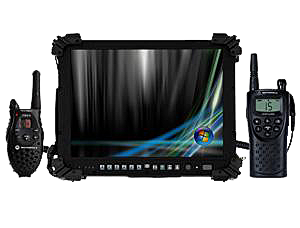 At AMREL, we see a lot of other people’s mistakes. Clients frequently come in with tales of woe, asking us to clean up messes made by them or their previous customization company. Some errors are specific to the customization process; others are true for rugged computers in general.
At AMREL, we see a lot of other people’s mistakes. Clients frequently come in with tales of woe, asking us to clean up messes made by them or their previous customization company. Some errors are specific to the customization process; others are true for rugged computers in general.
Of course, we’re happy for the business, but we think a little bit of knowledge can save everyone a lot of headaches. So, before you begin your journey through customization, take this short test to see if you’re ready.
Part One: True or False
Please indicate which of the following statements are true.
1) Mean Time Between Failures (MTBF) is a valid way of comparing quality of parts from different companies.
2) Customizations must be done by third parties.
3) The manufacturer’s warranty never includes customization.
4) Low-volume customizations are too expensive to be practical.
5) The warranty and purchase price reflect the true cost of the computer.
6) A signed obsolescence agreement with your vendor ends your worries about End of Life issues.
7) No such thing as “Customized COTS.”
Part Two: Name three wrong things the narrator did in the following story
“I needed a customized application for rugged computers. It was quite tricky. My team sat down, created a solution, and wrote the specs for it. We weren’t sure which rugged computer company to use, so we picked a large one, assuming they had the best capabilities. They explained to us that our specs weren’t practical. For one thing, the solid state hard drive required by our specs was much more expensive than we expected. We had to eliminate some of our wireless capabilities and other features in order to meet our pricepoint.”
Part Three: In one word, what is the most important thing to look for in a supplier of customized rugged computers?
For the answers to these questions, click here.
Some computer manufacturers are eliminating IEEE 802.11b protocols, claiming that it will improve 802.11g. Since 802.11n is the fastest WLAN standard, why have any legacy Wi-Fi at all?

